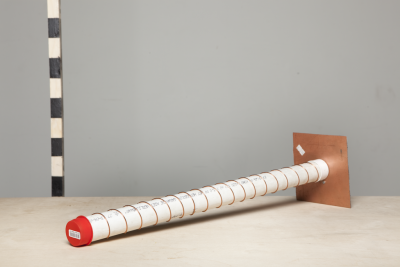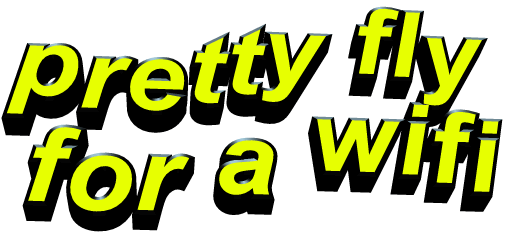Pretty Fly for a Wifi: Difference between revisions
Roelroscama (talk | contribs) |
Roelroscama (talk | contribs) No edit summary |
||
| Line 4: | Line 4: | ||
|Featured image=File:Pretty Fly Tent.jpeg | |Featured image=File:Pretty Fly Tent.jpeg | ||
|Workdesc=It is a combination of pots and pans, dishes and cans through which people from around the world give shape to their collective dream of making an alternative internet. Each of these objects tells part of the story of individuals and groups, who each in their own way try to reconfigure the internet’s infrastructure to achieve this goal. For this project I built, tested and documented these antennas and in the process revisited their histories, origins and uses. | |Workdesc=It is a combination of pots and pans, dishes and cans through which people from around the world give shape to their collective dream of making an alternative internet. Each of these objects tells part of the story of individuals and groups, who each in their own way try to reconfigure the internet’s infrastructure to achieve this goal. For this project I built, tested and documented these antennas and in the process revisited their histories, origins and uses. | ||
|Bio= | |Bio=An artist and researcher who spent too much time on his computer. Out of this predicament came a collaborative practice in which he likes to deal with the cultures and issues surrounding networked computation. Currently his topics of interest include the internet's infrastructure, wireless community networks and DIY techniques. | ||
|URL=http://roelof.info | |URL=http://roelof.info | ||
|Project URL=http://roelof.info/ | |Project URL=http://roelof.info/ | ||
Revision as of 14:32, 24 June 2014
| Student | Roel Roscam Abbing |
|---|---|
| Graduation Year | |
| Featured image | File:File:Pretty Fly Tent.jpeg |
| Work Description | It is a combination of pots and pans, dishes and cans through which people from around the world give shape to their collective dream of making an alternative internet. Each of these objects tells part of the story of individuals and groups, who each in their own way try to reconfigure the internet’s infrastructure to achieve this goal. For this project I built, tested and documented these antennas and in the process revisited their histories, origins and uses. |
| Bio | An artist and researcher who spent too much time on his computer. Out of this predicament came a collaborative practice in which he likes to deal with the cultures and issues surrounding networked computation. Currently his topics of interest include the internet's infrastructure, wireless community networks and DIY techniques. |
| URL | http://roelof.info |
Previously
This project grew out of my interest in the internet's infrastructure. Previously at the PZI I made charts of my global travels across the internet. Inspired by that I made a browser extension that shows you on which networks and in which countries you are surfing. I also looked into the culture of networked warfare and tried to make an index of the internet.
Antennas
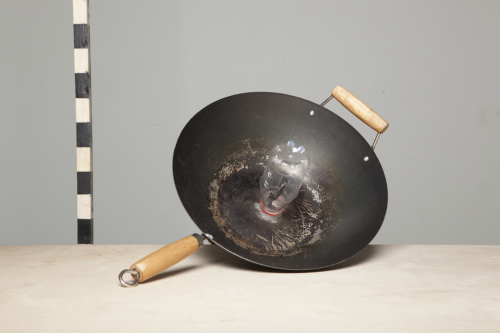
Shortly after the commercial introduction of WI-FI equipment the idea of community wireless networks emerged. These grassroots organizations use WI-FI to build alternative network infrastructures, often on a peer to peer basis and without the need for costly wires. Such network infrastructures can be found on rooftops, balconies and windowsills and can cover large distances by broadcasting from building to building.

Wireless community networks serve a variety of purposes, sometimes to provide broadband connections where there are none, to make censorship free alternatives to the internet or to share the costs of a single internet connection. All these networks use cheap and readily available consumer electronics and are thus limited to a range of around 30 meters. To increase their range, these networks often rely on self-made antennas to make more distant connections possible. With the use of self-made antennas people have able to connect machines that are tens of kilometers apart.
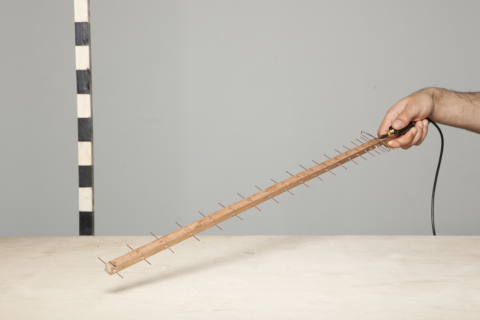
Through these self-made antennas people from around the world have given shape to computer networks that reflect their personal ideals. With a wavelength of around 12 centimeters, antennas for 2.4Ghz WI-FI have dimensions that are literally handy. As a consequence, these antennas are both clever appropriations and accidental convergences of the shapes and sizes of household objects that happen to accommodate the size of the 2.4Ghz radio wave.
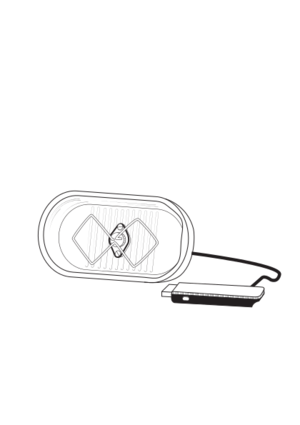
This sardine tin antenna was found on the Wiki of the Brussels-based Réseau Citoyen (Citizen’s Network) wireless community. The organization describes itself as being inspired by libertarian values, trying to provide all the members of the network with internet access, outside of the grasp of big corporations. They cite the before mentioned research by Stan Swan as an inspiration for this sardine can antenna, which they describe as the best choice for a beginner to get into antenna building. One only needs to fold the ‘biquad’ element out of a cop- per wire and solder this to a connector which is mounted inside the sardine tin. 2006, BE, http://reseaucitoyen.be/wiki/index.php/SardineCanAntenna Illustrations by Lídia Pereira

Geekcorps Mali is a not-for-profit organization, supported by the US AID fund, that tries to foster digital independence as well as trying to spur private enterprises in developing countries with the help of volunteers from technolo- gy industries. Between 2004 and 2005 Geekcorps developed a project in Mali. One of the great challenges they met there was to establish internet connec- tions. In order to do so they built wireless antennas by recycling locally available materials and creating what they call the Bottle Net which provided inhabitants of remote villages with internet connections. The design works in a similar fashion to a cantenna but it uses folded wire-mesh instead. 2005, ML, https://web.archive.org/web/20070129024850/http://mali.geekcorps.org/2005/11/07/ how-to-make-a-bottlenet-antenna/

